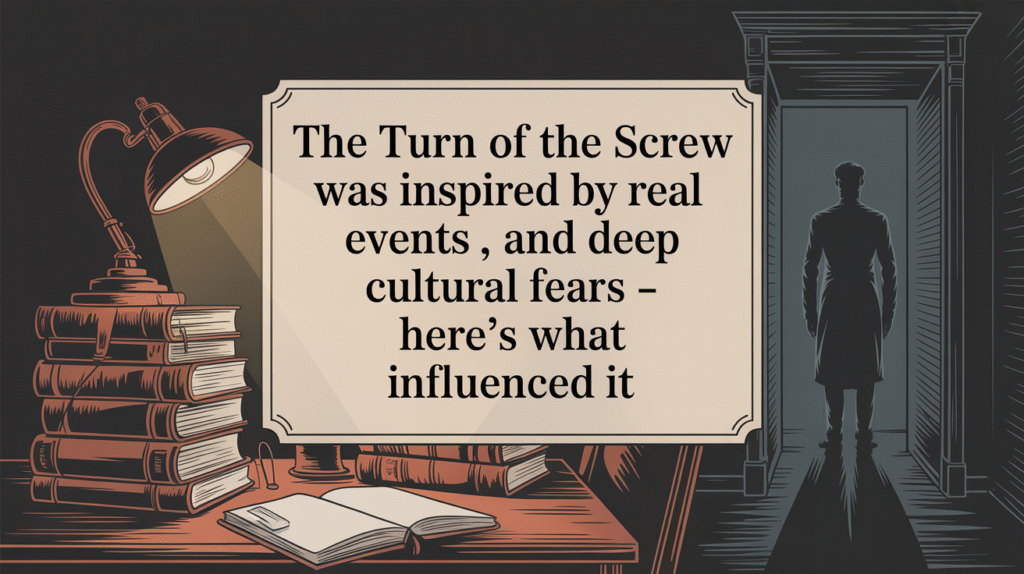The Turn of the Screw didn’t emerge in a vacuum. Henry James drew on real-world events, social anxieties, and literary traditions to craft one of literature’s most debated ghost stories. Understanding these inspirations not only deepens appreciation for the novella but also offers clues to its most mysterious elements.

This article explores the historical, cultural, and personal sources that likely shaped the book’s haunting content.
Henry James’s Background Played a Central Role
James’s own experiences, personality, and relationships strongly influenced the development of the story.
Literary Upbringing and Artistic Peers
Henry James was born into a family of intellectuals and was surrounded by major writers and thinkers of the era.
- His brother was the philosopher William James, whose work explored psychology and perception.
- James associated with literary figures like Robert Louis Stevenson and Edith Wharton, who also wrote about ghosts and repression.
Fascination with the Supernatural
Though not overtly a spiritualist, James was intrigued by ghost stories and the psychology behind them.
- He admired gothic literature and the ghost tale tradition popular in Victorian England.
- His letters and essays reveal a deep interest in how fear and the mind interact.
A Real-Life Ghost Story May Have Sparked the Plot
According to James’s notebooks and correspondence, the basic premise of The Turn of the Screw was inspired by a real account.
The Archbishop’s Ghost Story
James reportedly heard a tale from Edward White Benson, the future Archbishop of Canterbury.
- Benson told of a young boy and girl in the care of a governess who believed the children were under supernatural influence.
- This core idea, combined with James’s literary imagination, formed the skeleton of his novella.
Transformation of Oral Tale to Psychological Thriller
James took the story’s basic plot but added complexity and ambiguity.
- He removed any definitive supernatural validation.
- Instead, he emphasized psychological interpretation and narrative doubt.
Victorian Society Was Obsessed with Spiritualism
The late 19th century saw a surge in interest in ghosts, séances, and the afterlife.
Rise of Spiritualist Movements
In both the United States and England, spiritualism gained followers across all classes.
- People regularly hosted séances and believed in communication with the dead.
- The Society for Psychical Research was founded in 1882 to study paranormal phenomena.
Public Fascination with the Unseen
James’s audience was primed to be intrigued by the supernatural.
- By refusing to confirm the existence of ghosts, he challenged readers used to sensational stories.
- He invited a more intellectual and skeptical approach to fear and belief.
Repression and Morality in the Victorian Era
Much of the novella’s tension comes from the cultural values and taboos of James’s time.
Sexual Repression and Social Order
The Victorian era was marked by strict moral codes and the concealment of desire.
- The governess’s anxiety about “corruption” and “innocence” reflects societal obsession with purity.
- Peter Quint and Miss Jessel represent the consequences of breaking these moral rules.
Gender Roles and Isolation
Governesses were often left in isolation, expected to maintain control without real power.
- The character’s descent into paranoia mirrors the emotional toll placed on women in isolated positions.
- Her struggle also comments on the unrealistic expectations for women’s virtue and emotional restraint.
Literary Influences Shaped James’s Structure and Style
James didn’t just take cues from real life, he was also responding to the literary landscape of his time.
Gothic Fiction and the Uncanny
Writers like Edgar Allan Poe and Sheridan Le Fanu were early influences on James.
- He adopted gothic tropes such as haunted houses, eerie children, and doomed protagonists.
- But he stripped away melodrama, focusing instead on subtle terror and inner conflict.
Psychological Realism
James pioneered psychological fiction, which blurred the line between thought and action.
- The governess’s mental deterioration is portrayed with literary techniques that suggest emotional realism.
- He embedded Freudian and early psychoanalytic concepts into the story, before Freud became mainstream.
FAQs About the Real-World Inspirations Behind The Turn of the Screw
Here are some questions and answers about the real events, cultural movements, and literary context that influenced The Turn of the Screw:
Was The Turn of the Screw based on a true story?
Yes, in part. Henry James was inspired by a story told to him about a governess and two haunted children. However, he significantly altered and expanded the narrative.
Did Henry James believe in ghosts?
James was more interested in the psychology of fear than literal belief. He used ghosts as literary tools to explore deeper human emotions and mental states.
Why did he leave the ending so ambiguous?
James wanted to provoke thought and discussion. By avoiding clear resolution, he encouraged readers to focus on interpretation and emotional response rather than plot alone.
Was Victorian society really obsessed with ghosts?
Yes. Spiritualism and ghost stories were very popular, and many Victorians believed in contact with the dead through séances and mediums.
How did gender roles influence the story?
The governess’s isolation and her societal role reflect the limited power and heavy expectations placed on women, especially in caregiving positions during that era.
The Turn of the Screw reflects the fears, obsessions, and contradictions of Henry James’s world. Its ghostly themes may be fiction, but the forces that shaped them, spiritualism, repression, isolation, and memory, were very real. Understanding these origins helps explain why the novella still unsettles and fascinates more than a century later.
